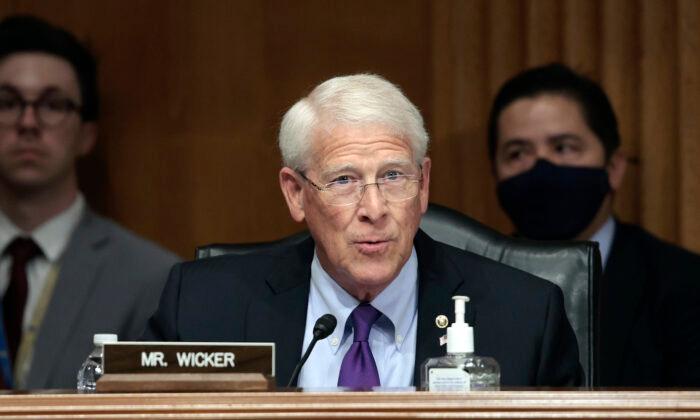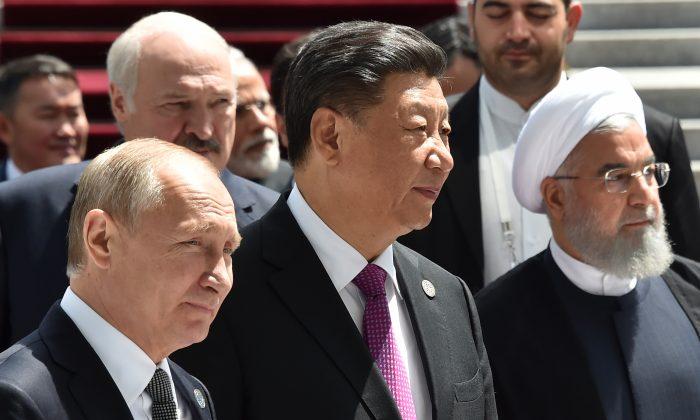Donald Rumsfeld got scorched by media rubes for saying: “You go to war with the army you have, not the army you might want or wish to have at a later time.”
But he was right, and his instant maxim certainly applied to America’s response to 9/11’s surprise attacks.
You certainly go to war with your navy as it is, not what it could be in eight to 12 years. Building warships, training naval ship and air crews, modernizing fleet support facilities and maintenance operations: The complex enterprise of creating a war-winning fleet has a very long lead time.
Is a war with China likely? We are in what is now sometimes called the “Davidson window of vulnerability” versus China. In 2021 former Indo-Pacific Combatant Commander Adm. Phil Davidson told the Senate Armed Services Committee China’s leaders were “accelerating their ambitions to supplant the U.S.” and might attack within the next six years—2027.
Davidson, the commander who would fight that war, thinks we are not prepared to win a war with China in the western Pacific.
Sen. Roger Wicker (R-Miss.) has served on the Armed Services committee for several years. Credit Wicker with seeing China’s naval forces expand while the U.S. Navy shrinks. In 2017 he tried to kick-start naval and commercial shipbuilding with an act to expand American maritime industrial capacity.
On May 3, Wicker gave a Senate speech that begins with a blunt warning: “I come before the Senate today to discuss the United States Navy’s ability to deter conflict in the Pacific. As China’s navy has grown, ours has shrunk—and we are running out of time to tilt the balance of power back toward the United States and to ensure that deterrence does not fail in the Western Pacific.”
Deterrence. Scipio Africanus, the Roman general who defeated Hannibal, put it this way: “If you want peace, prepare for war.” War in the western Pacific would be a naval war. Wicker believes U.S. forces can no longer demonstrate the overwhelming military strength and preparedness it takes to convince Chinese leaders that they would lose a war with America.
More from Wicker’s speech: “China’s rising strength on the seas is a direct threat to international peace and security. Their ability to control the major sea lanes strikes at the heart of free and market-based economies in Asia and across the globe. For a few minutes today, I will outline that threat, our lack of preparedness, and what it will take for us to deter China from acting irresponsibly.” Wicker quoted U.S. naval theorist Alfred Thayer Mahan: “Whoever rules the waves rules the world.” Then added “Beijing knows a great navy is a necessary step in their march for regional dominance.”
The senator describes a war for national survival. In late 1992 I was serving as a strategic war-gaming consultant in the Secretary of Defense’s Office of Net Assessments. Net Assessments director, the great Andrew Marshall, gave his consultants a long-term thought experiment: How could the U.S. fight and win a war for national survival against China circa 2020 or 2025?
We’ve thought a lot and done much—but haven’t done enough. The “hull deficit”—the shortage of warships and support vessels—is real. Wicker pointed out that in 2030 China will have a fleet of 440 warships. The U.S. Navy? Perhaps 290.
Wicker got into the nitty specifics of modern naval warfare, such as the number of missile-carrying vertical launch systems (VLS, also called vertical launch cells) China’s ships will carry. These launchers “are the primary offensive tool of any navy. A recent analysis found Beijing has more vertical launch cells than the U.S. and our allies combined.”
Wicker then excoriated the Biden administration’s shipbuilding program as being inadequate and “ceding control of the western Pacific to the dictator, Xi Jinping, and his communist fleet.”
Harsh words but the facts and Chinese aggressive behavior warrant them.
What do we do to close the window of vulnerability? I’ll discuss Wicker’s recommendations and other options next week.





